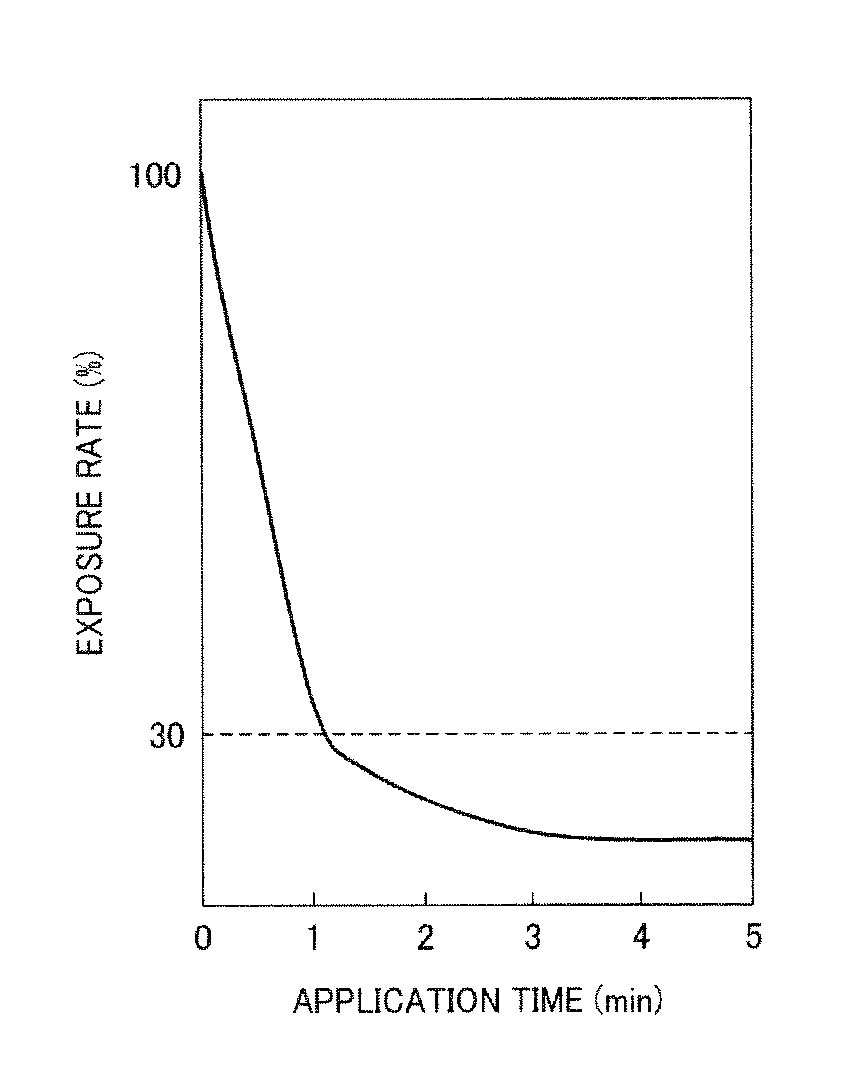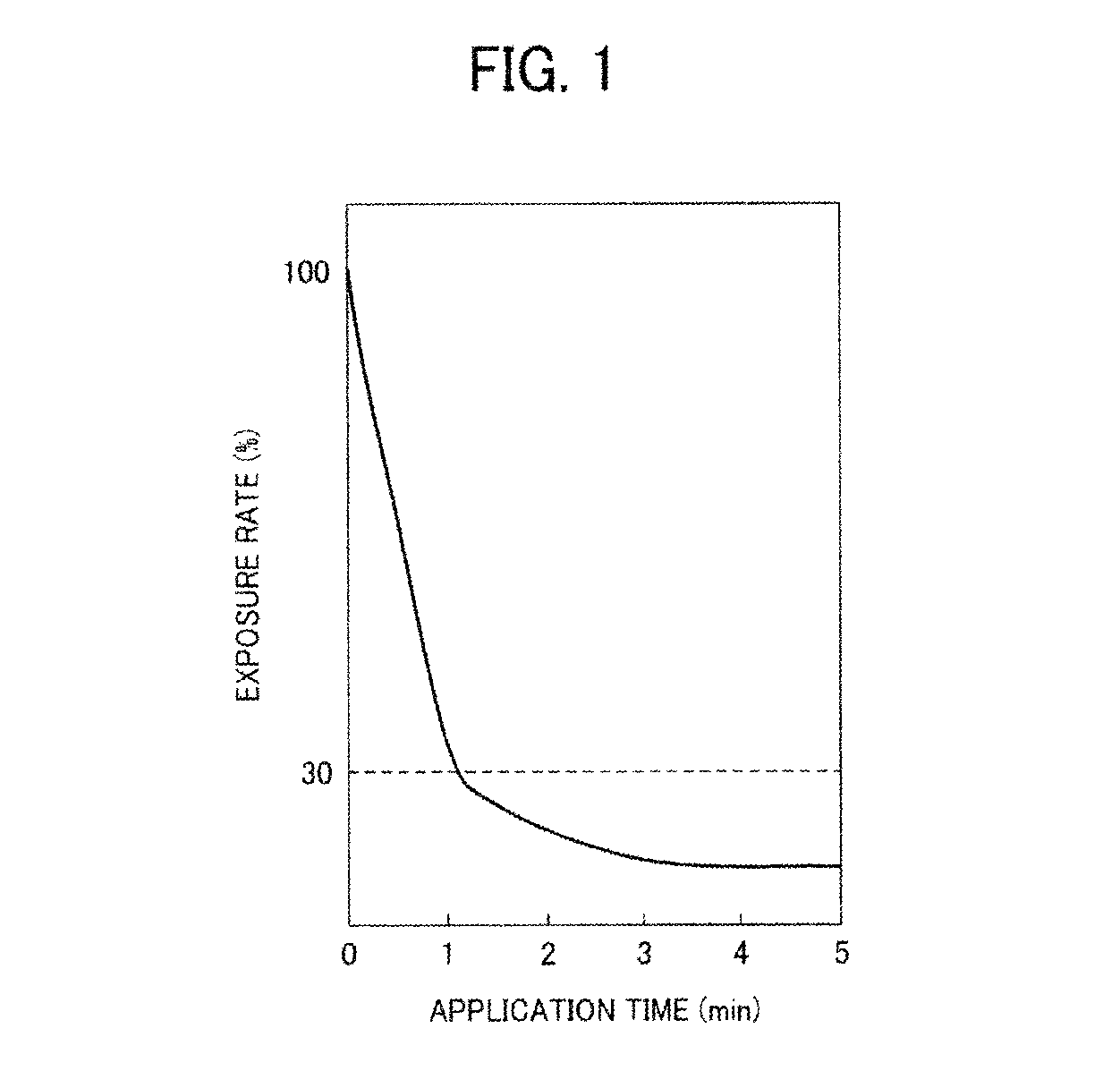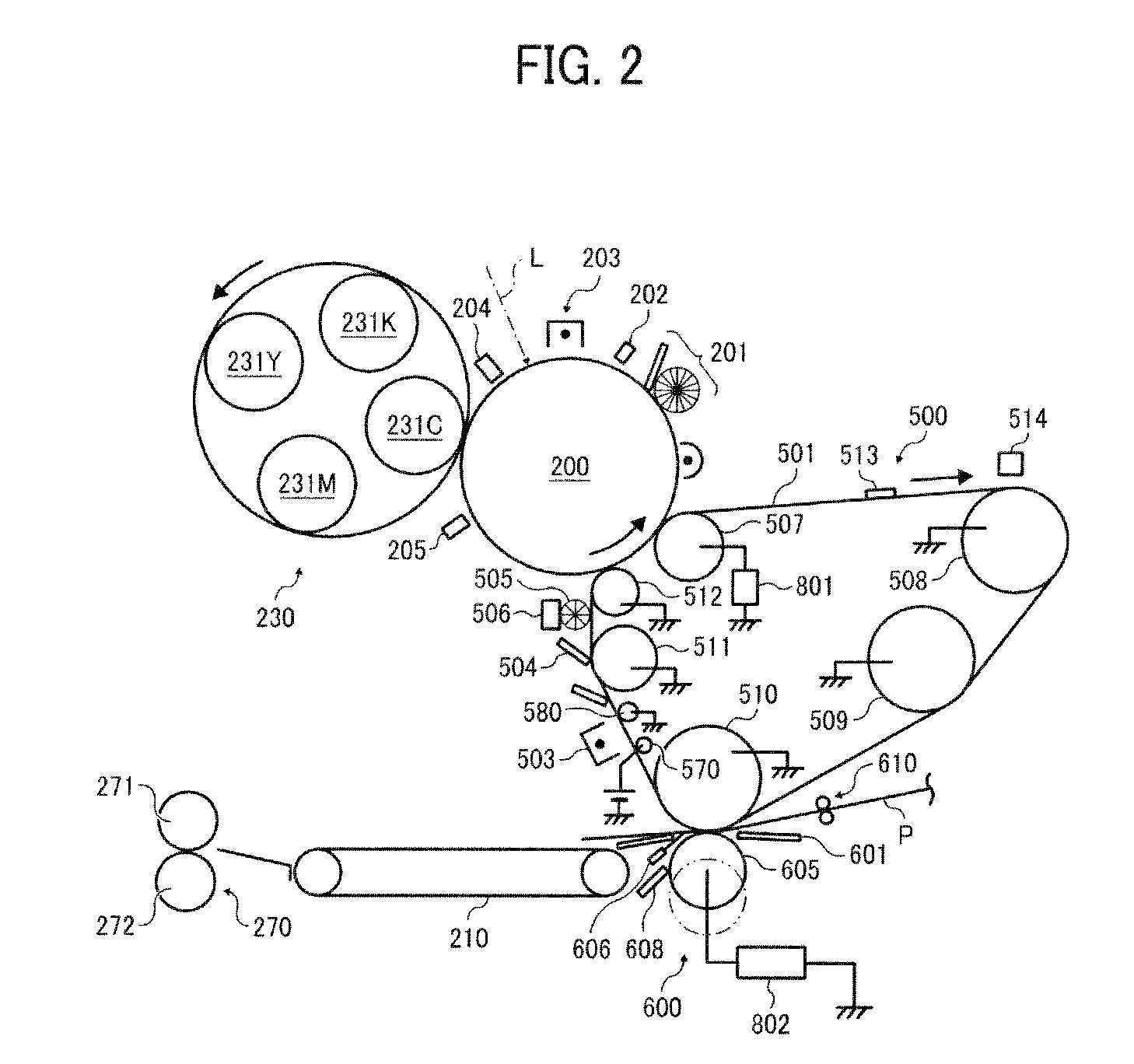Image forming method
a technology of image forming and transfer belt, which is applied in the direction of electrographic process, instruments, synthetic resin layered products, etc., can solve the problems of shortened lifespan of intermediate transfer belt, deterioration of electric properties with repeated image forming operations, and easy insertion of transfer belts
- Summary
- Abstract
- Description
- Claims
- Application Information
AI Technical Summary
Benefits of technology
Problems solved by technology
Method used
Image
Examples
example 1
(Preparation of Intermediate Transfer Belt A)
[0166]To prepare a carbon black dispersion, 2 parts of a polyimide solution U-Varnish A (including 18% of solid components, from Ube Industries, Ltd.), 8 parts of a carbon black Special Black 4A (from Degussa), and 90 parts of N-methyl-2-pyrrolidone (from Mitsubishi Chemical Corporation) are mixed, and the mixture is subjected to a dispersion treatment for 5 hours using a bead mill disperser filled with zirconia beads with a diameter of 1 mm.
[0167]To prepare a coating liquid, 50 parts of the above-prepared carbon black dispersion, 50 parts of a polyimide solution U-Varnish A (including 18% of solid components, from Ube Industries, Ltd.), and 0.01 parts of a polyether-modified silicone FZ2105 (from Dow Corning Toray Co., Ltd.) are mixed, and the mixture is subjected to defoaming using a centrifugal agitation defoaming device.
[0168]The coating liquid is poured into a metallic cylindrical mold having an outer diameter of 100 mm and a length ...
example 2
(Preparation of Intermediate Transfer Belt B)
[0174]The procedure for preparation of the intermediate transfer belt A in Example 1 is repeated except for changing the profile of the convexities on the surface. Specifically, the mold is changed to another mold, the inner surface of which has linear concavities with a depth of 0.02 μm and a width of 1 μm, which are formed so that the average area defined by the linear concavities is 3,000 μm2.
[0175]Thus, an intermediate transfer belt B is prepared. The surface of the intermediate transfer belt B has linear convexities with a height of 0.02 μm and a width of 1 μm. The average area defined by the linear convexities is 3,000 μm2.
(Evaluation)
[0176]The intermediate transfer belt B is evaluated as the same manner in Example 1.
example 3
(Preparation of Intermediate Transfer Belt C)
[0177]The procedure for preparation of the intermediate transfer belt A in Example 1 is repeated except for changing the profile of the convexities on the surface. Specifically, the mold is changed to another mold, the inner surface of which has linear concavities with a depth of 0.1 μm and a width of 1 μm, which are formed so that an area defined by the linear concavities is 3,000 μm2.
[0178]Thus, an intermediate transfer belt C is prepared. The surface of the intermediate transfer belt C has linear convexities with a height of 0.1 μm and a width of 1 μm. The average area defined by the linear convexities is 3,000 μm2.
(Evaluation)
[0179]The intermediate transfer belt C is evaluated as the same manner in Example 1.
PUM
| Property | Measurement | Unit |
|---|---|---|
| area | aaaaa | aaaaa |
| width | aaaaa | aaaaa |
| height | aaaaa | aaaaa |
Abstract
Description
Claims
Application Information
 Login to View More
Login to View More - R&D
- Intellectual Property
- Life Sciences
- Materials
- Tech Scout
- Unparalleled Data Quality
- Higher Quality Content
- 60% Fewer Hallucinations
Browse by: Latest US Patents, China's latest patents, Technical Efficacy Thesaurus, Application Domain, Technology Topic, Popular Technical Reports.
© 2025 PatSnap. All rights reserved.Legal|Privacy policy|Modern Slavery Act Transparency Statement|Sitemap|About US| Contact US: help@patsnap.com



